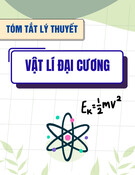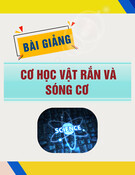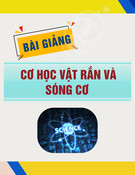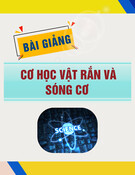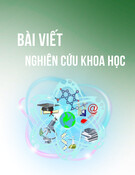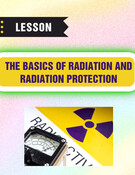
A STUDY ON THE EFFECTIVENESS OF SINGLE-LAYER AND
THREE-LAYER STACKING IN LUMINESCENT SOLAR
CONCENTRATORS USING INORGANIC PHOSPHOR FILMS
Nguyen Thi Hue1*, Le Thanh Lanh1
1Dong Nai technology University
*Corresponding author: Nguyen Thi Hue, nguyenthihue.01@dntu.edu.vn
1. INTRODUCTION
Green energy development remains a
pivotal focus in global energy policies, with
renewable technologies, particularly
photovoltaic (PV) systems, playing a crucial
role. While the promise of solar energy is
undeniable, challenges persist, primarily driven
by the high costs associated with materials and
PV module production. In response to these
challenges, researchers have explored
innovative approaches to harness solar energy
more efficiently (Hughes et al., 2017).
Numerous studies have delved into
luminescent solar concentrators (LSCs) as an
alternative means to address the cost constraints
of traditional solar cell production. LSCs offer
a unique solution by leveraging luminescent
materials to collect sunlight over a larger
surface area and directing it towards smaller,
strategically placed solar cells (De Boer et al.,
2012). This approach holds the potential to
maintain power output while reducing the
overall dependence on solar cells, thereby
mitigating costs and lessening the
GENERAL INFORMATION
ABSTRACT
Received date: 25/4/2024
This study investigates the performance of luminescent solar
concentrators (LSCs) using inorganic phosphor films. We
examined both single-layer and three-
layer stacking
configurations on BK7 glass substrates (5 cm × 5 cm × 5 mm),
using red, yellow, and gre
en phosphors. Phosphor
concentrations ranged from 10% to 50%, with a film thickness
of approximately 60 μm achieved through spin-coating. The
coated substrates were cured through a series of heating steps
to ensure stability. Two experimental groups were established:
single-layer and three-
layer stacking. Performance metrics
including open-circuit voltage (Voc), short-
circuit current
density (Jsc), and maximum power (Pmp) were measured
using a solar simulator. The results demonstrate that three-
layer stacking significantly enhances the efficiency of LSCs
compared to single-
layer configurations, with the optimal
arrangement being a red-yellow-
green stack. This study
provides a detailed analysis of the impact of phosphor
concentration, film thickness, and stacking configuration on
LSC performance.
Revised date: 30/5/2024
Accepted date:13/06/2024
KEYWORD
Luminescent solar energy;
Phosphor films;
Photovoltaic efficiency;
Solar concentrator;
Stacking methods.
49

environmental impact associated with fossil
fuel use and ozone-depleting gas emissions
(Ying et al., 2017).
This study contributes to the evolving
landscape of LSC research by specifically
investigating the efficacy of inorganic phosphor
films. The choice of inorganic phosphor films
introduces a novel element into the LSC
framework, with a particular focus on
optimizing the stacking methodology. The
utilization of three different color inorganic
phosphor films presents an opportunity to
explore nuanced variations in performance and
efficiency (Correia et al., 2014; Van Sark et al.,
2023).
The primary objective of this research is to
evaluate and compare the effectiveness of
single-layer and three-layer stacking methods
in LSCs employing inorganic phosphor films.
The study aims to provide insights into how
different concentrations and arrangements of
phosphor films impact the overall efficiency of
the LSC system. By addressing the nuances of
phosphor film placement, the research
endeavors to identify optimal configurations
that enhance solar energy absorption and
conversion (Jaing et al., 2017; García-Delgado
et al., 2024).
Throughout the study, the effectiveness of
the proposed LSC configurations will be
quantified using key performance metrics,
including efficiency, measured in percentage
terms (Hughes et al., 2020). The results will be
presented and analyzed in terms of open voltage
(Voc), short current (Ish), and maximum power
(Pmp), allowing for a comprehensive
assessment of the impact of inorganic phosphor
film concentration and stacking arrangements
on the LSC's overall performance (De Boer et
al., 2012). The presentation of data in
percentage values will facilitate a clear
understanding of the degree of improvement or
decline in efficiency associated with different
experimental conditions (Ying et al., 2017).
2. METHODOLOGY
The study employed a comprehensive
approach to assess luminescent solar
concentrators (LSCs) with inorganic phosphor
films. It involved experimental design, utilizing
BK7 glass substrates and three distinct
phosphor colors. The coating process
introduced controlled variations in phosphor
concentrations (10%-50%) and a curing process
for stability. Experimental groups, including
single-layer and three-layer stacking, were
established. Key performance metrics (Voc,
Ish, Pmp) were measured using a solar
simulator. Rigorous data collection, multiple
replications, and statistical analysis provided
insights into LSC performance. Ethical
considerations ensured compliance, including
informed consent. The detailed methodology
supports a thorough investigation into the
efficacy of single-layer and three-layer stacking
in LSCs with inorganic phosphor films,
includes the following 5 steps (Ying et al.,
2019).
Step 1: Experimental design: In pursuit of
assessing the efficacy of luminescent solar
concentrators (LSCs) utilizing inorganic
phosphor films, a comprehensive experimental
design was employed. The primary objective
was to investigate the impact of both single-
layer and three-layer stacking configurations on
the performance of LSCs. The study utilized
BK7 glass substrates measuring 5 cm × 5 cm ×
5 mm. The inorganic phosphor films,
representing three distinct colors (red, yellow,
and green), were prepared and applied to the
glass substrates under various conditions.
Step 2: Coating process: To introduce
controlled variations, phosphor concentrations
were systematically altered across a range from
10% to 50%. The film thickness was
meticulously regulated to approximately 60 μm
50

through a precise spin-coating process.
Following the coating, a curing process was
implemented by subjecting the phosphor-
coated BK7 glass to sequential heating in an
oven, starting at 600°C for 15 minutes,
followed by 800°C for 15 minutes, and
concluding at 1200°C for 30 minutes. This
curing process aimed to ensure the stability and
adherence of the phosphor layer on the glass
substrate.
Step 3: Experimental groups: Two distinct
experimental groups were established for
investigation: single-layer stacking and three-
layer stacking. In the single-layer
configuration, each phosphor film was
individually applied to the glass substrate,
allowing for an analysis of their standalone
performance. Meanwhile, the three-layer
stacking involved the strategic combination of
red, yellow, and green phosphor films in
varying configurations to explore synergistic
effects and identify optimal arrangements for
enhanced efficiency .
Step 4: Measurement parameters: The
study employed a solar simulator to capture
essential performance metrics of the
luminescent solar concentrators. Specifically,
the open voltage (Voc), short current (Ish), and
maximum power (Pmp) were measured under
different conditions to comprehensively
evaluate the efficiency of the LSCs. This choice
of parameters provided a nuanced
understanding of the electrical characteristics
and overall effectiveness of the different
stacking methods.
Step 5: Data collection and data analysis:
A rigorous data collection process was
implemented, encompassing multiple
replications for each experimental condition to
enhance the reliability and robustness of the
findings. Variations in phosphor
concentrations, film thickness, and stacking
configurations were systematically recorded.
The comprehensive dataset aimed to capture
the nuanced impact of each variable on LSC
performance, enabling a detailed analysis of
trends and patterns. The collected data
underwent meticulous statistical analysis to
derive meaningful insights. Statistical methods
such as analysis of variance (ANOVA) were
employed to assess the significance of
differences between experimental groups. This
rigorous approach allowed for the identification
of patterns, trends, and statistical significance
in the performance variations observed under
different conditions.
Step 6: Ethical considerations: In
adherence to ethical standards, the study
ensured compliance with guidelines governing
research involving materials and experimental
procedures. If applicable, informed consent was
obtained from participants. The ethical
considerations underscored the commitment to
conducting research with integrity and respect
for ethical principles, safeguarding the rights
and well-being of all involved parties.
3. EXPERIMENTAL
The experimental procedures were
meticulously designed to investigate the impact
of single-layer and three-layer stacking
configurations on the efficiency of luminescent
solar concentrators (LSCs) utilizing inorganic
phosphor films. To begin, BK7 glass substrates,
measuring 5cm × 5cm × 5mm, were selected as
the foundation for the experiments. The
inorganic phosphor films, distinguished by
three distinct colors (red, yellow, and green),
were prepared with precision to ensure
uniformity and repeatability in the subsequent
coating process.
The coating process involved a careful
balance of phosphor concentrations and film
thickness. Phosphor concentrations ranging
from 10% to 50% were systematically applied
to the BK7 glass through a spin-coating
51

mechanism, allowing for precise control over
the film thickness. The subsequent curing
process, which entailed heating the phosphor-
coated substrates at 600°C for 15 minutes,
800°C for 15 minutes, and 1200°C for 30
minutes, aimed to secure the adherence and
stability of the phosphor layers on the glass
substrate.
Two distinct experimental groups were
established: the single-layer stacking
configuration and the three-layer stacking
configuration. In the single-layer setup, each
phosphor film was individually applied to the
glass substrate. This approach facilitated an
examination of the standalone performance of
each color variant. Conversely, in the three-
layer stacking configuration, various
combinations of red, yellow, and green
phosphor films were strategically stacked on
the glass substrate. The objective was to
explore potential synergies and identify optimal
arrangements that could enhance the overall
efficiency of the LSC.
The measurement parameters
encompassed key electrical characteristics of
the LSCs and were assessed using a solar
simulator. Open voltage (Voc), short current
(Ish), and maximum power (Pmp) were
meticulously measured under different
experimental conditions. This choice of
parameters enabled a comprehensive
evaluation of the electrical performance of the
LSCs and facilitated the identification of
optimal stacking configurations.
Data collection was executed with a high
degree of rigor, involving multiple replications
for each experimental condition. Variations in
phosphor concentrations, film thickness, and
stacking configurations were systematically
recorded to build a robust dataset. The collected
data, rich in detail, aimed to capture the
nuanced impact of each variable on LSC
performance, providing a foundation for the
subsequent in-depth analysis. The Schematic
diagram of the experimental setup for
evaluating single-layer and three-layer shown
in Figure 1.
Figure 1. Schematic diagram of the experimental
setup for evaluating single-layer and three-layer
stacking configurations of inorganic phosphor films
in LSCs.
The experimental design incorporated
ethical considerations, ensuring compliance
with guidelines governing research involving
materials and experimental procedures. If
applicable, informed consent was obtained
from participants, highlighting a commitment
to conducting the research with integrity and
respect for ethical principles, thus safeguarding
the rights and well-being of all involved parties.
The power conversion efficiency (PCE) is
a critical metric in evaluating the performance
of photovoltaic (PV) devices, and for
Luminescent Solar Concentrator (LSC)
systems, it is defined as the product of the
optical collection efficiency (ηopt) and the
efficiency of the edge-mounted PV cell under
the downshifted flux of the luminophore (ηPV).
The overall PCE (ηLSC) can be expressed as
follows (Batchelder et al., 1979):
Here:
ηPV is the efficiency of the edge-
mounted PV cell under the downshifted flux of
the luminophore.
ηopt is the optical collection efficiency.
52

JSC is the short-circuit current density.
VOC is the open-circuit voltage.
FF is the fill factor.
Pin is the incident solar power density
on the top surface of the LSC.
The optical collection efficiency ηopt is
defined as the ratio of the overall PCE of the
LSC system ηLSC to the efficiency of the edge-
mounted PV cell ηPV
This measure provides insights into how
effectively the LSC system collects and directs
incident solar radiation to the edge-mounted PV
cell. It is crucial for evaluating the performance
of the LSC in converting absorbed light into
electrical power. In this study, the relative
optical collection efficiency ηoptis employed as
a key parameter to quantify LSC performance
(Chen et al., 2022).
4. RESULTS AND DISCUSSION
The experimental investigation into
luminescent solar concentrators (LSCs)
utilizing inorganic phosphor films revealed
intriguing trends and crucial insights. The
results are presented in a series of figures, each
contributing to a nuanced understanding of the
impact of different stacking configurations and
phosphor concentrations on LSC efficiency.
This figure 2 portrays the efficiency variations
of red, yellow, and green single inorganic
phosphor films when placed above the glass
substrate. The concentration of phosphor in
each film is systematically increased, ranging
from 10% to 50%. Notably, the red phosphor
film shows a decline in efficiency at a 30%
concentration, suggesting that the film absorbs
a significant portion of the solar spectrum,
hindering penetration. Similarly, the green
phosphor film experiences a decrease in
efficiency at a 50% concentration, indicating
saturation effects. These findings highlight the
importance of optimizing phosphor
concentration for efficient light absorption and
conversion.
The result shown in Figure 3 that the focus
shifts to the efficiency dependence on phosphor
concentration when the films are placed under
the glass substrate. Unlike the decline observed
in Figure 2, the efficiency demonstrates a
consistent linear increase with concentration.
This phenomenon can be attributed to the
sunlight penetrating through the glass,
undergoing total internal reflection, and
uniformly irradiating the phosphor film. The
reduction in light loss contributes to the
improved efficiency seen in this configuration.
The Figure 4 explores the efficiency of
LSCs with three different phosphor films
stacked above the glass. A notable reduction in
efficiency is observed compared to the single-
layer configurations in Figure 2. The
relationship between increased film thickness
and reduced light penetration becomes evident,
leading to decreased efficiency. Interestingly,
the highest efficiency is achieved when the
yellow fluorescent film is placed over the red
and green fluorescent films. This strategic
arrangement leverages the shorter wavelength
of the yellow film for efficient sunlight
absorption and enhances overall efficiency
through subsequent absorption by the second
and third layers.
The data shown in Figure 5 which
illustrates the efficiency dependence on the
concentration of inorganic phosphor films
stacked under the glass, a consistent increase in
efficiency with concentration is observed, the
red fluorescent film, when strategically placed
on top of the yellow and green fluorescent
powder films, exhibits optimal efficiency. This
configuration mitigates the self-absorption
problem, enhancing overall efficiency. The
trend aligns with the expectation that increasing
53

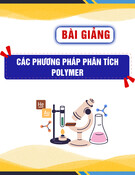
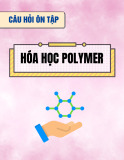

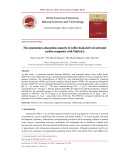
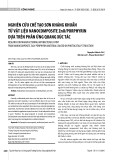
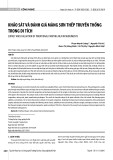
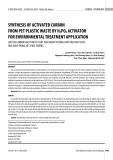
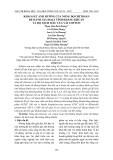

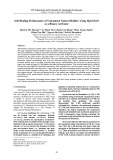
![Bài giảng Vật lý đại cương Chương 4 Học viện Kỹ thuật mật mã [Chuẩn SEO]](https://cdn.tailieu.vn/images/document/thumbnail/2025/20250925/kimphuong1001/135x160/46461758790667.jpg)




